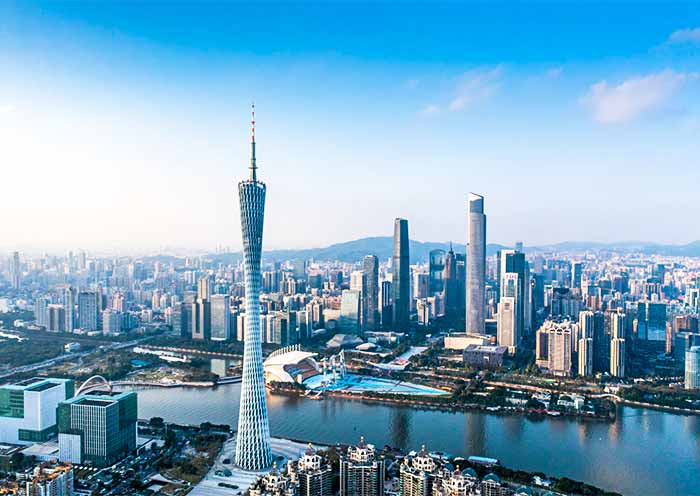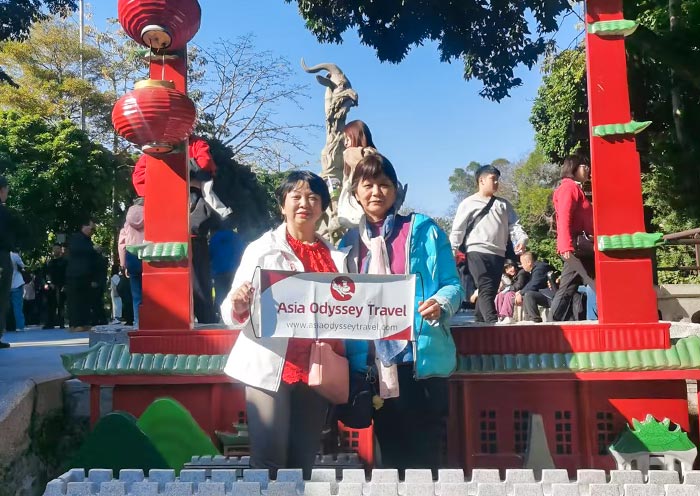We would like to thank Victor (the travel consultant),Tommy (our tour guide) and Driver Sifu (my apologies for not getting him name) making our 7 days *Guangzhou-Foshan-Shenzhen* such a memorable trip for our family. We travelled in a group of 16 family members (Ranging 4 years to 73 years) and they just done that so perfectly. Tomorrow (29/01/20525) is our Chinese New Year and I thank this opportunity to wish all of you a properous and healthy Year of Snake
- Highlights
- Itinerary
- Price
- Trip Notes
- Accommodation
- Photos
- Reviews
Whether you're drawn to Guangzhou's historical charm or Shenzhen's technological prowess, these cities promise an unforgettable journey blending tradition, innovation, and cultural richness. Take our 3 Days Guangzhou Shenzhen Tour to explore "Southern Gateway" (Guangzhou) and "Silicon Valley of China" (Shenzhen), where ancient heritage meets modern marvels.
You will enjoy a journey through Guangzhou's dual axes, where old and new converge. Explore the traditional axis, discovering tales of the Nanyue King and the iconic Five Rams Sculpture. Transition to the modern axis in Zhujiang New Town, marveling at architectural marvels like the Canton Tower. Immerse yourself in Xiguan's authentic charm, from serene Lychee Bay to the enchanting sounds of Cantonese opera. Experience the balanced rhythms of classic Cantonese living on this unforgettable tour.
Enjoy a captivating tour of Shenzhen, China's modern metropolis that transformed from a humble fishing village. Explore the fascinating Shenzhen Museum, admire the panoramic views from the Ping'an Financial Center, experience the cultural diversity at Splendid China Folk Village, and unwind amidst the serenity of Shenzhen Bay Park.
Take our 3 Days Guangzhou Shenzhen Tour now! From “Flower City” (Guangzhou) to the "Window of Reform and Opening" (Shenzhen), you will have memorable experiences with Cantonese Cuisine and the modern and historical side of both Guangzhou and Shenzhen.
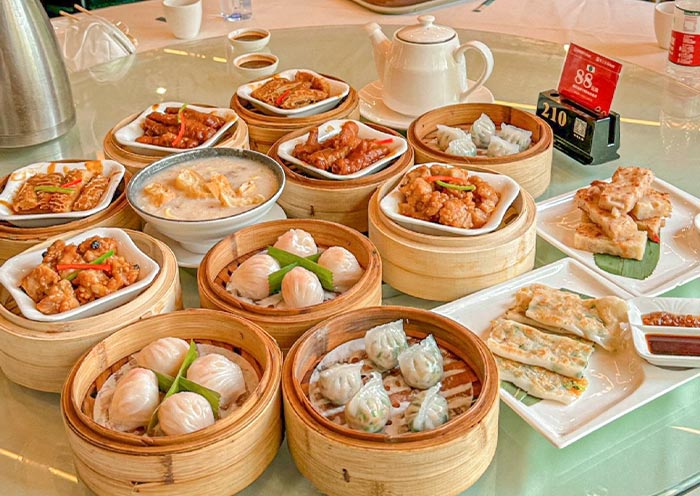











Itinerary at a Glance
Guangzhou (2 Days)
Yuexiu Park, Nanyue King Mausoleum Museum, Beijing Road, Huacheng Square, Canton Tower (Outside View), Pearl River, Chen Clan Ancestral Hall, Lychee Bay, Cantonese Cuisine, Yongqing Fang, Shamian Island
Shenzhen (1 Day)
Shenzhen Museum, Shenzhen Ping’an Financial Center, Splendid China Folk Village, Shenzhen Bay Park
Itinerary Day by Day
Full-day exploration of Guangzhou City, the capital city of Guangdong province and the third-largest city in China (after Shanghai and Beijing). The Ancient Central Axis: Tracing Back to the "Origin" of Guangzhou
Spanning millennia, the ancient central axis of Guangzhou stands as a testament to the city's profound historical significance. This axis, running through key locales such as Yuexiu Park and Beijing Road, this historical vein pulsates with stories that have shaped Guangzhou's identity. The foundational point of Guangzhou can be traced back over 2,000 years ago when the Nanyue Kingdom during the Qin and Han dynasties established its capital here, marking the inception of an enduring narrative.
Greeted by the morning light, you can pay a visit to Yuexiu Park (越秀公园) like the locals. The park, which centers around Yuexiu Mountain, stands as one of the landmarks of Guangzhou. Yuexiu Mountain, an extension of Baiyun Mountain, has remnants from over 2,000 years ago left by the Nanyue King Zhao Tuo, hence its initial name "Yue King Mountain." Following the Xinhai Revolution, Sun Yat-sen frequented Yuexiu Mountain for reading and official duties. Today, Yuexiu Park is lush and vibrant, functioning as a comprehensive park that serves both locals' leisure activities and tourists' sightseeing.
Entering through the park's west gate, on your right, stands an 11-meter-tall sculpture known as the Five Rams Sculpture (五羊石雕) which is deeply rooted in a local legend integral to Guangzhou's cultural identity. According to the lore, during a severe famine thousands of years ago, five immortals rode into Guangzhou on five rams and presented the people of Guangzhou with rice stalks held in their mouths and wished the region to be forever free from famine. After their departure, the five rams transformed into stone, leading to the city's nicknames, the "City of Rams". It is more than just a physical landmark, as it embodies the city spirit of gratitude, compassion, mutual assistance, diligence, and bravery, and has become a symbol of Guangzhou. On the slope opposite the Five Rams Sculpture, you will see the only remaining section of the ancient wall from the Ming Dynasty. Over 600 years old, this wall bears witness to the urban layout's formation during that era.
You also have the option to visit the summit where the Zhenhai Tower (镇海楼), often referred to as the “Five-Storied Pagoda,'”stands tall and proud, despite its 600 years of repeated destruction and rebuilding. Note: This visit is priced at RMB 10 per person. Once you reach the top, a panoramic view awaits, offering breathtaking sights of the Pearl River and Baiyun Mountain. This tower now hosts the Guangzhou Museum, a historical comprehensive museum that serves as a crucial venue for collecting and displaying historical artifacts of Guangzhou. Also perched on the mountain is the Sun Yat-sen Monument (中山纪念碑), built to commemorate the democratic revolutionary Sun Yat-sen. It was designed by the famous architect Lu Yanzi, who also designed the Sun Yat-sen Memorial Hall (中山纪念堂), an octagonal palace-style structure that seamlessly blends Eastern and Western architectural styles. They are both located on the traditional central axis of Guangzhou city, forming a unified whole and becoming symbols of Guangzhou’s modern history.
After you visit Yuexiu Park, delve underground to explore the Western Han Dynasty Nanyue King Mausoleum Museum(南越王墓博物馆). Here, you'll get to witness firsthand the genuine tomb of Zhao Mo, the second emperor of the Nanyue Kingdom during the early years of the Western Han Dynasty. The museum serves as a reminder of Guangzhou's ancient history, the Nanyue Kingdom was a significant regional power and provides crucial insights into the Nanyue culture. For anyone interested in Chinese history, archaeology, or art, the tomb is the largest and the best preserved color-painted stone chamber found to date in the Lingnan region in South China and has unearthed numerous artifacts. Among all the 1,000 pieces of cultural artifacts, you won’t miss the spotlight “Jade Burial Garment” which is made up of 2291 pieces of jade, and also a collection of over 400 delicate ceramic pillows.
After visiting the Mausoleum Exhibition, head south to reach Beijing Road (北京路) - one of the most popular pedestrian streets in Guangzhou. This vibrant street offers a combination of global brands and local boutiques, as well as a wide range of dining options, from Cantonese street food to high-end restaurants. However, Beijing Road is more than just a shopping and dining destination. Known as Guangzhou's "millennium-old pathway," Beijing Road, once the nerve center of Guangzhou's political, economic, and cultural activities, has been the city's central axis since its establishment, with the city expanding outward from this starting point,. As you meander down the street, take note of the transparent glass panels underfoot. These panels offer a unique window into the past, revealing 11 ancient road layers from five historical periods: the Southern Han, Tang, Song, Ming, and Qing dynasties, as well as the base of the Song Dynasty's Gongbei Tower. Furthermore, Beijing Road is home to numerous historical and cultural sites. At the north end of the street is the Nanyue King Museum's Palace Exhibition (南越王博物院王宫展区), displaying archaeological remains of the Nanyue Kingdom's palace. Next to it is the Guangzhou City God Temple(广州市都城隍庙) which is the largest city God temple in Lingnan area during the Ming Dynasty. At the south end of the street is the Giant Buddhist Temple(大佛寺), showcasing a combination of traditional temple and Lingnan architectural styles.
The New Central Axis: Embracing the "Future" of Guangzhou
Following your journey through Guangzhou's ancient central axis, the narrative shifts towards the contemporary heartbeat of the city—the New Central Axis. It offers a contrast to the ancient legacies, introducing the city's modern evolution. As Guangzhou cements its place as a global metropolis, the new axis epitomizes the city's rapid development, ambition, and forward-looking vision.
Start your exploration at the Zhujiang New Town(珠江新城), which is Guangzhou's central business district and the symbol of its modern skyline. Home to towering skyscrapers: the sleek Guangzhou IFC Tower and the majestic CTF Finance Center. Looming in the distance is the iconic Canton Tower, an astonishing feat of engineering soaring to 600 meters. Locally, these three titans are affectionately dubbed "广州三件套" or "Guangzhou Three Piece Set."
The heart of the New Central Axis, Huacheng Square(花城广场), is a sprawling green urban park and public space surrounded by landmarks like the Guangzhou Opera House, designed by the famous architect Zaha Hadid, and the new Guangzhou Library, the Guangdong Provincial Museum. Most importantly, appreciate the slim outline of the iconic Canton Tower (广州塔) on the opposite bank of Pearl River. The square comes alive in the evening, with water features, light shows, and the shimmering reflections of the city's skyline in its man-made lakes.
Lastly, don't miss a stroll along the Pearl River(珠江), especially during the evening. With the city lights reflecting on the water, and the famous Pearl River Cruise passing by, it's a picturesque scene blending the old and new worlds of Guangzhou. As you conclude your journey along the Old & New Central Axis, you're left with an impression of a city that respects its past, yet eagerly embraces the future.
Evening Optional Activity: Dive into Guangzhou's enchanting night atmosphere with a memorable Pearl River night cruise (about 60 minutes) during 7 to 10 pm. A night cruise provides an unmatched vantage point to admire Guangzhou's skyline. Drift past iconic landmarks such as the Canton Tower, which shines brilliantly against the night sky, and the beautifully illuminated bridges that stretch across the river.

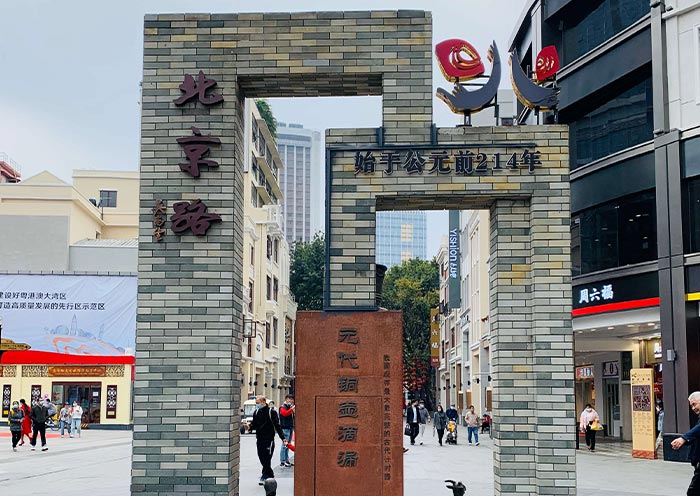


Wandering Xiguan: Following the Steps of the Locals, Savoring Guangzhou
Today, we'll follow in the footsteps of the local “Lao Guang” residents and dive deep into the heart of Guangzhou's traditional old city - “Xiguan”. "Xiguan" (西关) is a historically significant area in Guangzhou, located in the Liwan District. It encapsulates the heart of old Guangzhou and showcases the essence of Cantonese traditions in terms of art, food, opera, and daily life.
The history of Xiguan can be traced back to the Ming Dynasty when it was a suburb outside the west gate of Guangzhou City. In the Qing Dynasty, as Guangzhou became an important port for China's foreign trade, Xiguan gradually developed into a prosperous commercial and residential area. At that time, Xiguan gathered wealthy merchants from all over the country, who built many luxurious Xiguan mansions here. Xiguan is also one of the cradles of Guangzhou culture and has nurtured traditional art forms such as Cantonese opera, Yuequ, and Guangdong music. Xiguan is also a representative of Guangzhou's food culture, and there are many famous Cantonese restaurants here.
Begin your journey at the Chen Clan Ancestral Hall(陈家祠), a representation of the traditional Lingnan architecture and culture. The clan concept in the Lingnan region (which covers Guangdong and Guangxi provinces, and parts of Fujian) is very strong, and people attach great importance to the worship and memorial of their ancestors. The ancestral hall is the place where people worship their ancestors and the carrier of the clan culture. The Chen Clan Ancestral Hall stands as the largest, best-preserved, and most exquisitely decorated ancestral hall-style architecture in China, earning it the title of the "Jewel of Lingnan Architectural Art". This majestic hall was collectively financed and constructed by the Chen clans from all 72 counties of Guangdong province and was fully completed in 1894. Spanning an impressive 15,000 square meters, it showcases the grandeur and prominence of Guangdong's predominant surname, Chen. However, the true marvel that has etched the hall's name in the annals of architectural history is its unparalleled decorative artistry. The hall showcases the "Three Carvings" (San Diao) - stone, brick, and wood carvings; the "Two Moldings" (Liang Su) – ceramic and lime sculptures; and additionally, the intricate cast ironwork and exquisite color paintings, together recognized as the "Seven Wonders" (Qi Jue). Each element, be it a wooden panel, a brick wall, or a stone pathway, is embellished with designs and motifs teeming with symbolism and folklore. Additionally, the Chen Clan Ancestral Hall houses the Guangdong Folk Art Museum, where you can witness traditional Guangdong crafts such as ivory carvings, jade sculptures, Guangdong embroidery, and Guangdong colored ceramics, etc.
Continuing your Xiguan journey, drive to visit the scenic Lychee Bay (荔枝湾). Its name was derived from the abundant lychee trees that once lined its banks, bearing sweet fruit each summer. Once the backyard garden of wealthy merchants in Xiguan, the bay is now a serene water town in the heart of the city. As you meander along the bay, you will soak in the surroundings with age-old banyan trees lining its shores and rickety wooden boats gently drifting on its calm waters, bordered by aged buildings and temples. You will also encounter several historical bridges, each with its unique architecture and backstory, and come across the quintessential "Xiguan Big Houses" and other traditional Cantonese architectures, showcasing the opulence of Guangzhou's bygone era.
No journey through Xiguan is complete without indulging in its gastronomic delights. This area is the birthplace of several Cantonese culinary classics. From delicate shrimp dumplings to sumptuous rice noodle rolls and aromatic sweet soups, Xiguan's food offers a diverse range of flavors and textures. In addition, you can explore traditional teahouses and eateries that have withstood the test of time and continue to serve generations of Guangzhou residents. After your stroll, take a break at one of the many traditional teahouses along the bay. Enjoy a cup of freshly brewed local tea, accompanied by traditional Cantonese dim sum.
After enjoying Guangdong Yum cham (早茶), your next destination should be the Lychee Bay Grand Theater (荔枝湾大戏台). This theater serves as a venue for public benefit performances, to promote and preserve traditional Cantonese opera art forms. If your timing is right, you might be fortunate enough to catch a live performance. Nestled alongside Lychee Bay, the theater exudes a unique charm where the melodious chirping of birds harmoniously intertwines with the soulful rhythms of Cantonese opera echoing from the stage. Just a short distance away is the Lychee Bay Museum (荔湾博物馆), which showcases the unique cultural landscapes, folk customs, and historical narratives of Lychee Bay. Within its confines are three major exhibition areas. Notably, the Xiguan Folklore Hall(西关民俗馆) is transformed from a quintessential Xiguan grand mansion (西关大屋). Through authentic household furnishings and scene displays, it partially recreates the traditional archetype of a Xiguan house, offering a close glimpse into the lifestyle, cultural ambiance, and daily scenarios of Xiguan residents of yesteryears.
Then, your Xiguan exploration takes a new turn as you make your way to Yongqing Fang. Yongqing Fang(永庆坊) is located on the historically rich Enning Road (恩宁路), which boasts the longest and most intact qilou (骑楼) street in Guangzhou. The qilou, a hallmark of Guangzhou architecture, features a continuous covered walkway on the ground level with residential spaces above. This design, combining shopping and sheltered pedestrian access, epitomizes the city's blend of commerce and community. Post-renovation, Yongqing Fang manages to retain the vintage charm of old Guangzhou's Xiguan flavor, all the while infusing modern commercial artistry into its fabric. Strolling down Yongqing Fang, you're immediately embraced by a confluence of the old and the new. Rows of well-preserved, traditional Xiguan-style houses line the street, their facades exuding old-world charm, while their interiors house a myriad of trendy boutiques, art galleries, craft shops, and coffee joints, bringing a touch of contemporary urban chic to the historic surroundings.
There's no better place to conclude the journey than the enchanting isle of Shamian. Shamian Island(沙面岛), a sandbank island in the Liwan District, is a testament to Guangzhou's cosmopolitan past. It served as an important port and trading post, especially during the 18th and 19th centuries when China opened up to foreign trade. This history has left an indelible mark on Shamian, with its European-style architecture, bronze statues, and meticulously manicured gardens, making it a stark contrast to the bustling modernity of the rest of Guangzhou. Strolling along Shamian's tree-lined avenues feels like a journey through time. The well-preserved colonial buildings, once the homes and offices of foreign merchants and diplomats, now house boutique hotels, cafes, and shops. Many of these structures are a fusion of Neo-Classical, Gothic, and Baroque architectural styles, with some Chinese elements subtly incorporated. Overnight in Guangzhou.




This morning, you will take a high speed train to Shenzhen from Guangzhou (1.5 to 2 hours). Shenzhen is the most competitive and innovative city in China! Bordering Hong Kong, Shenzhen has transformed from a small fishing village into a major metropolis known as China's first Special Economic Zone. Today, you will enjoy a full-day guided tour with us to witness the fast development of Shenzhen through its impressive skyline and modern architecture. You will also have fun exploring cultural theme parks and relaxing at the beautiful beach park.
In the morning, your guide will meet you either in the hotel lobby in Shenzhen between 08:50 and 09:00 or at the train station (Shenzhen Futian/Shenzhen North). They will then accompany you to the Shenzhen Museum (深圳博物馆) for a comprehensive understanding of the history, folk culture, and development of the city. Inside the museum, you will explore the Folk Culture Exhibition Hall, where lifelike wax figures depict the traditional folk culture, lifestyle, and production methods of Shenzhen, with a specific emphasis on Cantonese and Hakka ethnic traditions. Additionally, you will have the opportunity to visit the Shenzhen Reform and Opening Exhibition Hall, providing insights into the rapid growth of the city.
Shenzhen's development has been remarkable, characterized by rapid growth. Despite being the smallest in terms of area among the four major cities of Beijing, Shanghai, Guangzhou, and Shenzhen, Shenzhen boasts the highest number of skyscrapers. Three iconic buildings stand out in the city: the towering Ping'an Financial Center, soaring to 599 meters in height; the impressive KK100, reaching 442 meters; and the notable Diwang Building, standing at 384 meters. The progressive increase in height among these three structures represents the different stages of Shenzhen's development. You will have the opportunity to ascend the tallest building in Shenzhen and the second-tallest building in China, the Ping'an Financial Center (平安金融中心). This 115-story, 599.1-meter skyscraper is surpassed in height only by the Shanghai Tower. Experience a thrilling ride in the world's fastest elevator and reach the observation deck located on the 116th floor. Witness the remarkable "miracle" of this city's ongoing growth and rapid development. Additionally, you will have the chance to take in the breathtaking panoramic view of Hong Kong from afar.
In this afternoon, make your way to Splendid China Folk Village (锦绣中华民俗村) and immerse yourself in history as you explore 5,000 years of culture in just one day. Splendid China is currently the world's largest and most content-rich scenic miniature area, divided into two parts: Splendid China and Folk Culture Village. The 82 miniature scenic spots are meticulously arranged according to the map of China, with a scale ratio of 1:15. Prepare to embark on a journey through five thousand years of Chinese history, all in a single day. Splendid China Miniature Scenic Area holds the title of being the largest miniature scenic area worldwide. As you stroll through the famous attractions of China, you'll find over 50,000 ceramic figurines carefully placed. Whether you're exploring the Great Wall, admiring the Dunhuang murals, marveling at the Terracotta Warriors of the Qin Dynasty, or taking in the impressive buildings of Hakka Tulou, you'll have the incredible opportunity to "step into history and tour China in one day". While, the Folk Culture Village showcases 27 villages representing different ethnic groups, each offering a glimpse into their religious beliefs, languages, folk customs, traditional music and dance, traditional costumes, folk festivals, distinctive architecture, folk artists, and ethnic flavors. It provides a comprehensive display of the unique cultural characteristics and intriguing humanistic charm of the Chinese nation. Seize the rare opportunity to enjoy their dances and live shows and immerse yourself in the joyful atmosphere.
After indulging in the cultural experience, take a leisurely break at Shenzhen Bay Park (深圳湾公园). Whether you choose to take a leisurely stroll or find a tranquil spot to sit and relax, you'll be treated to breathtaking views of the bay. Gaze upon the crystal-clear waters and marvel at the awe-inspiring silhouette of the Hong Kong skyline in the distance. If the weather permits, be sure to capture the beauty of the sunset and savor the gentle breeze that adds to the park's serene ambiance.
After the tour, it is time to end your 3 Days Guangzhou Shenzhen tour. Your guide will escort you to the airport/train station for your flight or high speed train to your next destination.
Thank you for choosing Asia Odyssey Travel (AOT) for your Guangdong Tour, we are always here working for you and hope to see you again for your next trip around China/Asia.

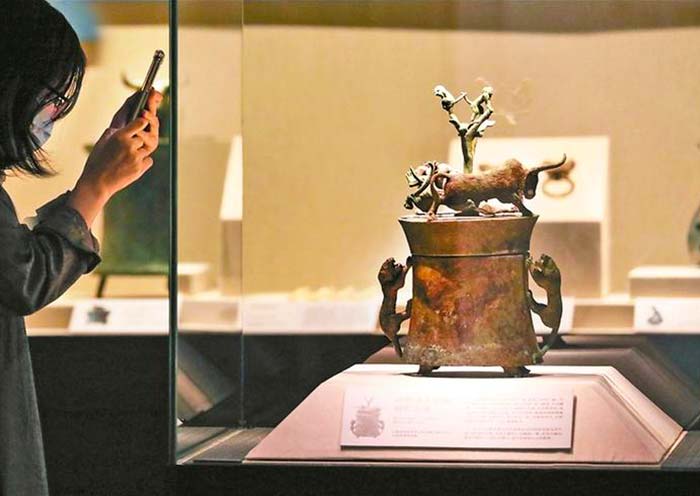
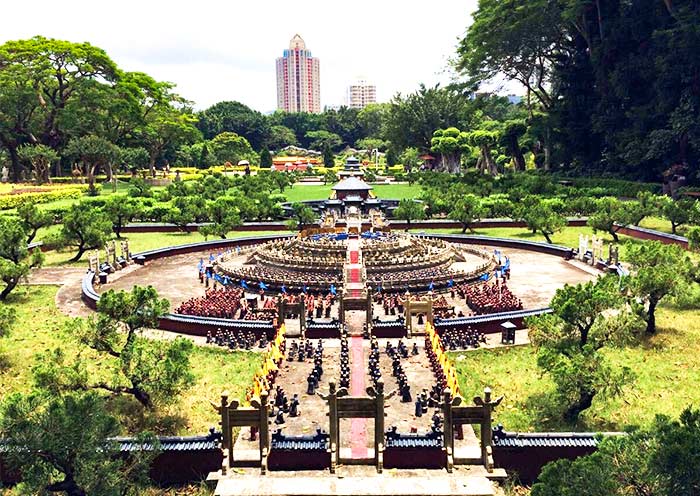

Price: What’s Included & What’s Excluded
What’s Included?
What’s Excluded?
Important Trip Notes for Booking a Private China Tour
Accommodation & Hotel Condition for Your China Tour
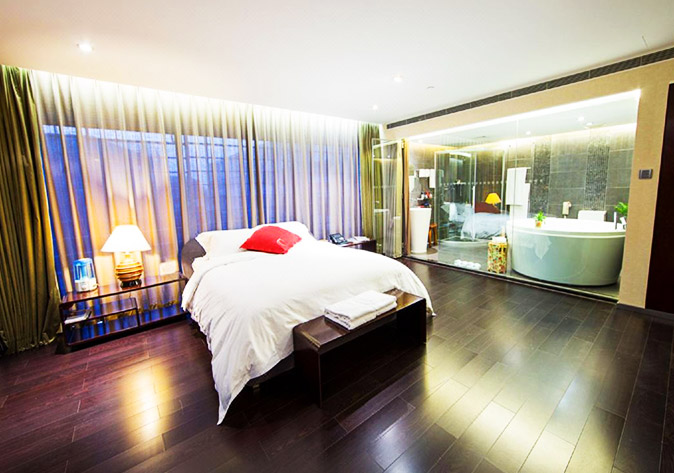



Photo Gallery for This Itinerary
Latest Guangzhou Tours Reviews from Our Customers

SiewGeok Tay
Malaysia
Destination(s): Guangzhou/Shenzhen
Date of Experience: Jan 22, 2025
Tour Customized by: Victor
You May be Interested in This Tour: Customized Tour

USJ
Malaysia
Victor, our tour advisor, responded with a proposal which needed minimum fine-tunning. He was detailed, responsive and knowledgeable.
This tour was customised, covering Guangzhou, Foshan, Kaipeng, Chung San, Dongguan, Shenzhen.
Victor was considerate and thoughtful - the schedule was spaced out with time for relaxing breaks and leisurely visits.
It was both educational and "experiencial" and we had time to mingle with the locals and visited both old and new parts of each of the cities.
We will engage their professional advice for our next visit.
Destination(s): Guangzhou/Shenzhen
Date of Experience: Mar 12, 2025
Tour Customized by: Victor
You May be Interested in This Tour: Customized Tour

SULTAN SARA
USA
Our family of four travelled to China on a customized tour organized by Asia Odyssey and we couldn’t be happier with the experience. Our personal planner, Cecilia, made sure all our must-do items were taken care of and she added just the right amount of adventure and rest that was needed. They took care of every need and we had amazing guides in every city waiting to show us around. The communication was great and we are already planning future Asia travels with Cecilia and Asia Odyssey! Highly recommend them.
Destination(s): Beijing, Zhangjiajie, Guangzhou/Shenzhen
Date of Experience: Dec 03, 2024
Tour Customized by: Cecilia
You May be Interested in This Tour: Customized Tour
Price: Request
(Based on a private tour for two people. Price varies depending on program, travel date, number of people.)
Free Enquiry! You don’t need to pay for the reservation.
- United States (+1)
- Australia (+61)
- Singapore (+65)
- Malaysia (+60)
- Philippines (+63)
- Canada (+1)
- Italy (+39)
- Indonesia (+62)
- United Kingdom (+44)
- Spain (+34)
- Mexico (+52)
- Hong Kong (+852)
- Thailand (+66)
- United Arab Emirates (+971)
- New Zealand (+64)
- South Africa (+27)
- Germany (+49)
- Brazil (+55)
- India (+91)
- France (+33)
- Vietnam (+84)
- The Netherlands (+31)
- Saudi Arabia (+966)
- Ireland (+353)
- Argentina (+54)
- Switzerland (+41)
- Romania (+40)
- Pakistan (+92)
- Japan (+81)
- Portugal (+351)
- Bangladesh (+880)
- South Korea (+82)
- Puerto Rico (+1)
- Türkiye (+90)
- China (+86)
- Belgium (+32)
- Qatar (+974)
- Greece (+30)
- Taiwan (+886)
- Austria (+43)
- Poland (+48)
- Israel (+972)
- Chile (+56)
- Sri Lanka (+94)
- Nigeria (+234)
- Peru (+51)
- Colombia (+57)
- Hungary (+36)
- Nepal (+977)
- Denmark (+45)
- Bulgaria (+359)
- Norway (+47)
- Slovenia (+383)
- Sweden (+46)
- Kuwait (+965)
- Costa Rica (+506)
- Ecuador (+593)
- Venezuela (+58)
- Malta (+356)
- Croatia (+385)
- Tunisia (+216)
- Czechia (+420)
- Mongolia (+976)
- Bahrain (+973)
- Mauritius (+230)
- Papua New Guinea (+675)
- Cambodia (+855)
- Dominican Republic (+1)
- Luxembourg (+352)
- Finland (+358)
- Guatemala (+502)
- Myanmar (+95)
- Maldives (+960)
- Slovakia (+421)
- Laos (+856)
- Serbia (+381)
- Brunei (+673)
- Oman (+968)
- Macao (+853)
- Panama (+507)
- Morocco (+212)
- Jordan (+962)
- Georgia (+995)
- Fiji (+679)
- Bolivia (+591)
- Lithuania (+370)
- Bahamas (+1)
- Cyprus (+357)
- Latvia (+371)
- Bhutan (+975)
- Iraq (+964)
- Iran (+98)
- Kenya (+254)
- Jamaica (+1)
- Zimbabwe (+263)
- Azerbaijan (+994)
- Uruguay (+598)
- Estonia (+372)
- Andorra (+376)
- Cameroon (+237)
- Ghana (+233)
- Kazakhstan (+7)
- Nicaragua (+505)
- Egypt (+20)
- Russia (+7)
- Albania (+355)
- Réunion (+262)
- Montenegro (+382)
- Algeria (+213)
- Afghanistan (+93)
- Martinique (+596)
- Uganda (+256)
- Honduras (+504)
- North Macedonia (+389)
- Trinidad and Tobago (+1)
- Suriname (+597)
- Antigua and Barbuda (+1)
- Zambia (+260)
- Ukraine (+380)
- Armenia (+374)
- Barbados (+1)
- Belarus (+375)
- Palestine (+970)
- Lesotho (+266)
- Moldova (+373)
- Ethiopia (+251)
- French Polynesia (+689)
- Gambia (+220)
- Guam (+1)
- Gibraltar (+350)
- Isle of Man (+44)
- New Caledonia (+687)
- El Salvador (+503)
- Comoros (+269)
- Seychelles (+248)
- Chad (+235)
- Samoa (+685)
- Cook Islands (+682)
- Palau (+680)
- Paraguay (+595)
- DR Congo (+243)
- Solomon Islands (+677)


